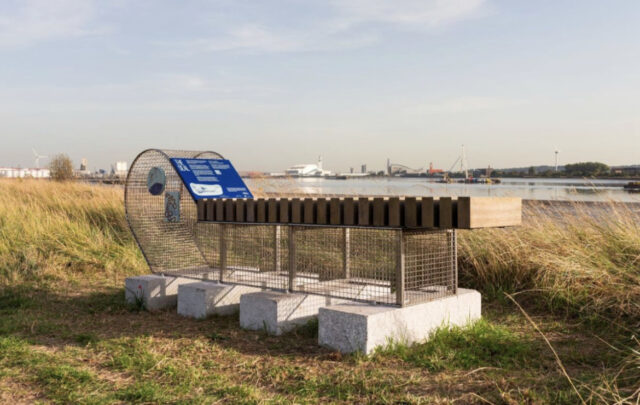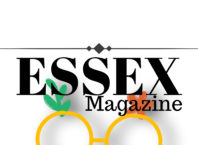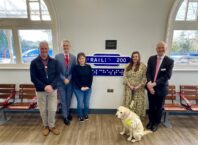From birds and bats to snakes and seals, a rich but rarely explored world of wildlife exists around the Thames as it flows through East London. Now, a new Wildlife & Wellbeing Trail conceived and delivered by Create London and funded by Barking Riverside Ltd is set to open up the secrets of this hidden ecosystem.
Incorporating a series of architectural, graphic and sound commissions that respond to the local landscape, the Wildlife & Wellbeing Trail invites visitors and Barking Riverside residents on a journey to discover the endangered, protected and often hidden wildlife. The trail takes them through Oystercatcher Park, home to a range of protected species, and on to the Thames Foreshore, where seals sunbathe and migrant birds travel from South Africa shores to breed.
“The Wildlife & Wellbeing Trail embodies what Create London is all about, bringing creatives in dialogue with communities to deliver infrastructure and artistic experiences that enrich shared spaces. All the commissioned artists, architects and designers have dived deep into the Barking Riverside and demonstrated how you can create something truly imaginative with a positive impact on the environment, humans and wildlife when you bring different skill sets together through a shared sense of purpose.”
– Marie Bak Mortensen, Create London
Informed by the area’s industrial history and steered by ecologists and wildlife experts, the trail has been designed by emerging practice Channel Projects, led by architect Ryan Cook and graphic designer Studio Vandling. Following the principles of circular design, Channel Projects and fabricator Meal Deal have transformed discarded building materials from Barking Riverside construction work and derelict fencing excavated from local nature reserves into trail markers.
Although the new signs and markers are sensitively woven into the landscape, their materiality makes legible references to the area’s industrial history and the current housing development. Minimising the introduction of new material into the natural environment has been a project priority, while ensuring the designed elements are of the highest quality.
“The project’s engagement with circular principles was achieved through open conversation and engagement with the design, commissioning and site teams. Discarded elements such as granite kerb stones, salvaged site fencing and ready made bench tops were identified and adopted as our material palette from which the size, design and form of the signs came about. The selective use of salvaged and waste construction materials marks a point in the site’s current development and references its use for industry, grazing and leisure.”
– Ryan Cook, Channel Projects
From a distance, these markers blend into the landscape; up close they mimic the shape of wildlife in abstract, their forms referencing the work of artists including Charlotte Posenenske, John Hejduk and Lütjens Padmanabhan.
“Working on something that brings people outdoors, that is free and that enables people to learn more about the wildlife that surrounds us, is close to my heart. The landscape of Barking Riverside is so unique – I love the idea that if you look closer into what is quite an industrial landscape there is a lot more to discover.
The identity plays on the idea of a trail or a journey, not a visual representation of the actual trail but more an idea that the place offers both a mental and physical space. Let your brain or legs wander…”
– Therese Vandling, Studio Vandling
Studio Vandling worked closely with Channel Projects to create a graphic identity for the trail that challenges the visual perception of nature walks, making the design enticing for people with various pre-existing interests in the natural environment to engage with the trail.




